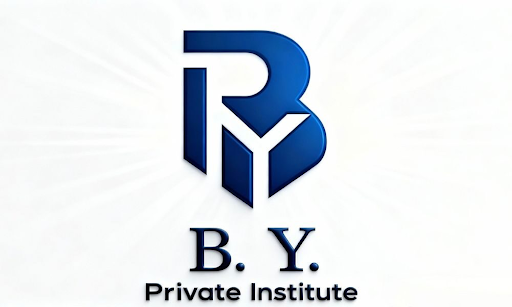VITALIK BUTERIN UNVEILS PLAN TO MAKE ETHEREUM "AS SIMPLE AS BITCOIN" WITHIN FIVE YEARS

Ethereum co-founder Vitalik Buterin announced a plan to simplify Ethereum's base protocol, drawing inspiration from Bitcoin's minimalist design approach. In a blog post titled "Simplifying the L1" published on May 3, 2025, Buterin outlined his vision to restructure Ethereum's architecture across consensus, execution, and shared components. "This post will describe how Ethereum 5 years from now can become close to as simple as Bitcoin," Cointelegraph reports. Buterin argues that simplicity is key to ensuring Ethereum's long-term resilience and scalability.
The proposed shift focuses on multiple layers of the Ethereum network. At the consensus layer, Buterin recommends a "3-slot finality" model that would eliminate complex components like epochs, sync committees, and validator shuffling. According to Bitcoin Ethereum News, this approach would make the protocol more accessible and user-friendly. On the execution layer, he proposes replacing the Ethereum Virtual Machine (EVM) with a simpler, ZK-friendly virtual machine such as RISC-V, potentially offering 100x performance improvements for zero-knowledge proofs.
This new direction comes amid concerns about Ethereum's position in the cryptocurrency market. During a panel at the LONGITUDE by Cointelegraph event on May 2, Alex Svanevik, CEO of data analytics firm Nansen, highlighted Ethereum's declining market dominance. "If you'd asked me 3–4 years ago whether Ethereum would dominate crypto, I'd have said yes. But now, it's clear that's not what's happening," Svanevik stated at the event, according to Coinotag.
Technical Details of the Simplification Strategy
The technical overhaul proposed by Buterin includes several targeted improvements designed to make Ethereum more efficient while maintaining its functionality. The "3-slot finality" model would reduce the digital signature load by decreasing the number of active validators required at any given time. "The reduced number of active validators at a time means that it becomes safer to use simpler implementations of the fork choice rule," Buterin wrote, as cited by Cointelegraph.
Additionally, Buterin suggests adopting Scalable Transparent Argument of Knowledge (STARK)-based aggregation protocols to decentralize and simplify network coordination. The shift from EVM to a RISC-V architecture for Ethereum's execution environment represents another major change. According to Cointelegraph, this move could dramatically improve the speed and efficiency of the network's execution layer.
These proposals align with Buterin's recent focus on forward-looking research. Earlier this year, Buterin outlined his 2025 Ethereum development priorities, which included investigating changes to achieve single-slot finality, updates to smart contract execution, and privacy enhancements, as reported by Cointelegraph. The Ethereum Foundation has restructured to allow Buterin more time for research and exploration, reflecting the importance of his technical vision for the platform's future.
Broader Implications for the Cryptocurrency Ecosystem
Buterin's simplification strategy comes at a crucial time for Ethereum, as it prepares for its next major upgrade. The Pectra upgrade, scheduled for May 7, 2025, combines features from the "Prague" and "Electra" development tracks and represents one of the most ambitious Ethereum upgrades to date, according to Cryptoapis. Pectra will implement 11 Ethereum Improvement Proposals (EIPs) focused on staking optimization, scalability, and network performance.
The proposed simplification could have significant implications for layer-2 solutions and Ethereum's relationship with competing blockchains. By enhancing base layer efficiency, Ethereum aims to better support the growing ecosystem of applications built on top of it. As Fidelity Digital Assets notes, Ethereum may face challenges in data availability and execution compared to competitors, but its liquidity and developer ecosystem continue to provide advantages.
This redesign also reflects a shift in Ethereum's governance and development approach. In January 2025, Buterin announced leadership changes at the Ethereum Foundation to prioritize technical expertise and improve communication with builders in the ecosystem, as reported by Cointelegraph. These changes align with his emphasis on resilience, decentralization, and user-focused development.
Market Response and Future Outlook
Investors and analysts view Buterin's simplification strategy as potentially transformative for Ethereum's competitive position. While Bitcoin recently achieved the milestone of surpassing $100,000 for the first time, as reported by BTC Peers, Ethereum faces challenges from multiple competing networks offering alternative approaches to smart contract functionality and network governance.
The success of Buterin's simplification plans will depend on the Ethereum community's ability to implement these changes while maintaining backward compatibility and network security. As Decrypt notes, Buterin has emphasized the need for layer-2 networks to support ETH's value by burning some of their fees or staking them for the community's benefit.
Industry experts suggest that while Ethereum's roadmap is complex, the shared vision among community members could drive successful implementation of these architectural changes. According to Coinbase, continuous improvements are essential for the Ethereum ecosystem to maintain its position in the competition for resources and talent against other Layer 1 blockchains.
Related Reading on BTC Peers
For more cryptocurrency insights, read "Investment Firm Switches to Bitcoin-Only Strategy as Ether Behaves Like Memecoin" on BTC Peers, which covers how Bitcoin holdings on exchanges have reached their lowest point in six months amid ongoing market conditions.




